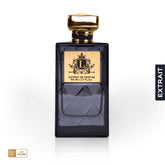What Are The Perfume Notes?
What is meant when it is called perfume notes is the opening stages of perfume fragrance. From the moment the perfume is used, these notes are why different scents are released at different times. The main reason for making such a distinction in perfume is that the perfume's fragrances belong to various substances, so their weight, density, and volatility are also different. There are three notes in the classic perfume composition. These are called top, heart, and base notes, respectively.
Top Note
The top note is the first smell heard when the perfume is squeezed, and since it consists of the most volatile essences, its effect lasts only a few minutes. The scent that the consumer receives at the trial stage is the most critical fragrances in marketing and selling perfumes but has the least effect during use. For this reason, when buying perfume, it is necessary not to comment immediately according to the smell heard at first. The top notes are also called" peak." Citrus and ginger fragrances are often used in principal note components due to their quick and rapid evaporation.
Heart Note
The heart note occurs when the sharp top notes disappear, and its effect lasts for several hours. The perfume character, the part that makes it different and appreciated, is actually in this layer. The heart note is also called the "heart note" in terms of indicating its importance, and its most obvious form is evident when the smell settles on the skin (skin). If we bought perfume, it would be better to wait a little longer and wait for the heart-note scents to be revealed. Generally, the heart notes of aroma contain floral and aromatic fragrances mixed into the air later.
Base Note
It adds richness and depth to the smell and is usually the note that begins to be heard at least half an hour after the perfume is applied when the heart note is close to disappearing. The scents of the base note are more dominant in intensity. This part is an expression of the right personality, permanence, and success of the perfume. The base notes' effect is proportional to the permanence of the smell and can last throughout the day.
According to The Type, Perfume Notes
Hot perfume notes spice notes, usually composed of pepper types, and perfumes of this style. In the same way, notes of inner-heating drinks such as bourbon, whiskey, sweet resins, and some types of trees such as cedar, sandalwood, sweet notes such as vanilla. Such perfumes are usually dark orange and are fragrances that give you a feeling of warmth against the cold in winter.
Although not very common, cold perfume notes are more often found in aquatic and fresh perfumes. Themes like water, ocean, ice. They have an almost cold structure, and in summer, it is refreshing. They resemble the cold snow air you inhale when you climb a stony hill. Perfumes of this style are outnumbered and are always synthetic due to their structure.
Bright perfume notes: these are notes consisting of all citrus fruits, slightly tropical and sour fruits, some slightly fragrant herbs and flowers, such as lemonade, honeysuckle, which are usually found in the upper blend of perfumes, and perfumes dominated by these notes.
Fresh perfume notes: this group is an extensive group, including the above group. All kinds of light, fruit, flowers, aquatic notes, herbs can be included in this group. For example, a sea scent, a light fig scent, mint, Kaaba straw, soapy scents, bergamot, light flowers, green notes, leaves.
Soft perfume notes this definition jasmine, honeysuckle, fragrant flowers such as Gardenia, peach, banana, melon, papaya and sweet soft fruits such as Pear Tree, Rosewood, sandalwood, bergamot and vanilla smell as sweet, amber, honey, milk and sweetish notes like for perfumes which are based on these contacts.

